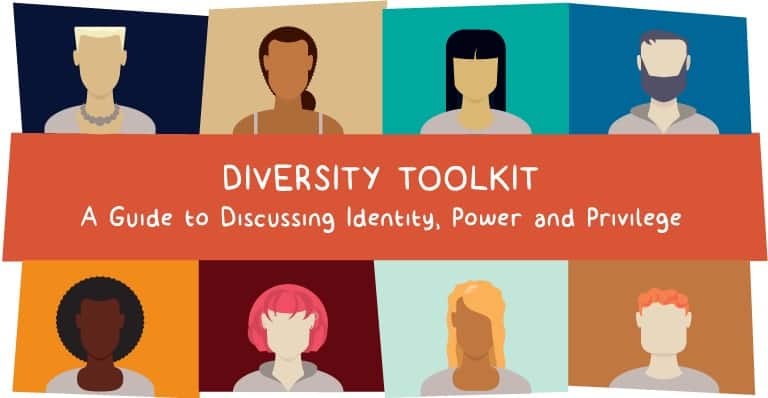Intersectionality Affects Diversity will be described in this article. The term “intersectionality” was first coined in the 1980s by legal scholar Kimberlé Crenshaw. It has since gained traction as a way to describe the interconnected nature of oppression. “What is intersectionality?” you may wonder. Simply put, intersectionality is the idea that different forms of discrimination (e.g., racism, sexism, homophobia, and ableism) overlap and interact with each other. The result is creating unique experiences of marginalisation.
How Intersectionality Affects Diversity & Inclusion In The Workplace
In this article, you can know about How Intersectionality Affects Diversity & Inclusion In The Workplace
This concept is not just theoretical; it has real-world implications for employees who belong to multiple underrepresented groups. For example, a black woman in a predominantly white and male workplace may experience both sexism and racism. This situation can lead to feelings of isolation and exclusion. Additionally, employees who are LGBTQIA+ may face discrimination not only from their colleagues but also from management. It can result in a lack of opportunities for professional growth.
Acknowledging the existence of intersectionality in the workplace is an important first step in creating inclusive environments for all employees. By understanding the unique experiences of marginalised employees, employers can take steps to address systemic oppression and create truly equitable workplaces.
Why Is Intersectionality Important

The concept of intersectionality is significant because it helps to explain why some people face the wrath of stereotypes more than others. It also highlights the importance of including multiple perspectives when making decisions that affect marginalised groups.
Ultimately, intersectionality is an insightful way of understanding the complex reality of human experience, and it’s of the utmost importance to target intersectional discrimination within the workplace for optimal and sustainable business growth.
Intersectional Discrimination Is Highly Important for Diversity and Inclusion in the Workplace
Three Ways Ignoring Intersectionality Can Affect Workplace Diversity & Inclusion
As the workforce becomes increasingly diverse, HR departments are under pressure to create an inclusive environment. It should respect and value all employees. However, many traditional HR approaches tend to focus on one type of discrimination at a time, such as gender or race.
This can be problematic because people are not one-dimensional; they may belong to multiple groups that are marginalised or discriminated against. For example, a black woman might experience both gender and racial discrimination. A more effective approach would be to take a holistic view of diversity and inclusion in the workplace. It should consider all aspects of an individual’s identity. This would allow HR departments to create policies and procedures that are truly inclusive and that support the well-being of all employees.
Increases Pay Gap Within Communities
Intersectionality research conducted by Lean In organisation states that women of colour receive 39% lower wages than white males in similar roles. While the gender aspect comes into play here, it is not the only discriminatory factor at work. The research reports that white women earn 21% more than women of colour. According to the Equality Human Rights report, people with disabilities are not only less likely to be hired but also receive a significant decrease in pay compared to the average employee.
While it’s important to focus on the gender pay gap, it’s equally, if not more, significant to consider the pay gap in other marginalised communities. Intersectionality calls for the acknowledgement of more than one aspect of identification in an individual. If workplaces and management are not mindful of more than one discriminatory group, it can negatively impact the business as a whole. While companies aim to lessen the pay gap between genders, they must pay equal attention to lessening the pay gap in other oppressed classes.
Higher Resignment Rates

Employees who experience discrimination are more likely to leave the organisation, costing the company money in lost productivity and turnover. For example, a woman of colour may experience discrimination based on race, gender, and religion. Employees who face intersectionality discrimination are more likely to feel isolated, unsupported, and devalued at work. This can lead to increased absenteeism, decreased motivation, and eventually, resignation. This is another Intersectionality Affects Diversity.
Organisations can create a more inclusive environment by ensuring that all employees feel respected and valued. Additionally, companies should provide training on unconscious bias and anti-discrimination policies to help employees identify and address incidents of discrimination. By creating a supportive and inclusive environment, organisations can help reduce the impact of intersectionality discrimination and retain talented employees.
Feeling Respected and Valued Is a Great Way to Create a More Inclusive Environment at Work
Decreases Development

Research has shown that Black women face significant barriers to career development compared to white women. One reason for this is that Black women have less access to training and mentorship opportunities. They are also less likely to be sponsored by senior leaders and, consequently, have fewer chances to interact with them. This lack of exposure makes it harder for Black women to develop their careers and advance within their organisations. This is another Intersectionality Affects Diversity.
The same goes for many people of colour and those with disabilities. As a result, fewer employees can showcase their talent and harness the power of their perspectives, experiences, and potential that could help the company prosper altogether. Companies that increase women’s representation in management and leadership roles but continue to ignore the displacement of other minority groups within these positions remain in a limited bracket of growth. That’s because marrying perspectives in creating new ideas is not diverse enough and will render less innovative solutions.
However, companies that embrace equal leadership opportunities for all employees can expand their knowledge base and experience higher levels of business growth. Here’s why:
- Diverse teams bring a variety of perspectives and ideas to the table. This can lead to greater creativity and innovation.
- Diverse teams are better able to understand and serve diverse customer groups. This is increasingly important as the world becomes more connected and global markets become more accessible.
- Diverse teams help create a culture of inclusion and respect, attracting and retaining top talent.
- In today’s competitive business environment, companies that want to grow need to create management teams that reflect the diversity of the world around them.
- Diverse Teams Have Better Results in Doing Their Tasks and Achieving Favourable Results
Diversity of Workforce
In the workplace, it’s more important than ever to be aware of the different factors that make up each individual. With the increasing diversity of our workforce, we must be conscious of the fact that everyone comes from different backgrounds and experiences.
Making assumptions about someone based on their appearance or visible characteristics is often ineffective. It can also lead to further misunderstanding and division. Instead, we should challenge our biases and attempt to see the whole person. By recognising that our personal experiences are only one piece of the puzzle, we can create a more inclusive workplace where everyone feels valued and respected.
